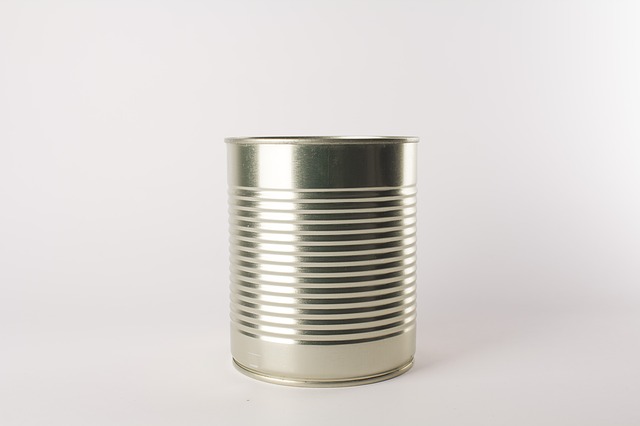Aluminum is a lightweight metal that is widely used in a variety of applications ranging from outdoor furniture and automobile trim to cookware and home decor to electrical appliances. When exposed to water over an extended period, this highly corrosive and robust material becomes unclean, requiring special cleaning techniques to remove the dirt and grime. A dull look is caused by impurities and grime on the surface of the metal, which may be remedied with simple cleaning.
In order to preserve aluminum surfaces in good condition, they must be cleaned on a regular basis. A different approach is required for cleaning anodized metal, as opposed to just removing dirt and grime.
Clean Aluminum in the most efficient way
Depending on the state of the metal item, there are a variety of cleaning methods available to you. Prewashing the aluminum component to remove dirt and grime is a common step in the cleaning procedure,
Use an Acid Wash to Remove Rust from Aluminum
Aluminum continues to tarnish and lose its lustre over time, making it look less appealing than when you first bought it. Utilize an acid bath to eliminate the oxidation and restore the shining appearance of the surface. With an acid wash, it is necessary to use extra caution and safety gear when cleaning aluminum pans or other objects. Put on a pair of rubber gloves and a pair of protective glasses before starting the acid wash for aluminum trailers or other metal products.
Once your aluminum piece has been pre-washed, fill a large bucket half with water before adding the acid carefully. Use either muriatic acid or hydrochloric acid, and follow the directions on the acid product label for the water to acid.
Cleaning Oxidized Aluminum
A chemical reaction leads the metal to wear away, leaving behind a thin and hard layer of corrosion. Oxidized aluminum is formed as a result. To eliminate oxidation from aluminum, you can create your own DIY aluminum cleanser.
- Using a microfiber cloth, gently wipe them away from the surface of the surface of the surface. Spray a small amount of denatured alcohol on the stains and fingerprints to aid in their removal with the cloth if necessary.
- In addition, if you have difficult-to-remove stains, you can use a commercially produced product like as Meguiar’s Oxidation Remover. It can be applied with microfiber cloths or a cotton terry towel and then removed with microfiber cloths once the cleaning is completed.Another alternative for oxidation spots that are difficult to remove is to use lemon and salt to dissolve them.
- Cut a full lemon in halves and save it aside for later. Pour some salt into a dish and then press the lemon, cut side down, into the salt to guarantee that the crystals adhere to the citrus fruit. After that, massage the oxidized portions of the aluminum with the lemon, cut and salty side down.
- In addition to using lemon juice, you could use a towel, brush, or cleaning pad sprayed with lemon juice to clean large surfaces.
Cleaning Corroded Aluminum
Aluminum items that have been exposed to the elements for an extended length of time can develop corrosion spots that will necessitate a little extra elbow grease to remove.Squeeze a lemon half and sprinkle a thin layer of salt on top. Clean the aluminum by brushing it with the lemon and washing away the residues with a soft cloth.Cream of tartar can be used on metal components that have been heavily rusted. Preparing the metal involves wetting a cloth and applying cream of tartar to it. Using a gentle scrubber, carefully rub the area, then rinse the aluminum with clean water and allow it to air dry thereafter.
Cleaning Hammered Aluminum
1. Fill the cooking pot halfway with the following ingredients:
- Water (two cups)
- 4 tbsp. cream of tartar
- One-half cup of your preferred acid
2. Do this step in your sink, a large bucket or plastic tub, or your bathtub if you have one handy. Use a drain plug to prevent water from escaping if you’re using the sink or bathtub.
3. Fill a sink, tub, or bucket halfway with the boiled liquid, and then submerge the aluminum item in the water for at least 10 minutes. It may be necessary to soak the aluminum for a longer period of time if the object has been extensively blackened.
4. The water mixture can now be drained. Fill your soaking area halfway with hot, but not boiling, water, and then add roughly a teaspoon of mild liquid dishwashing soap to the water, stirring constantly. Continuing to soak the aluminum goods in the new mixture for a minimum of five minutes will be beneficial.
5. Using one of the towels or the non-abrasive scrubbing pad, gently rub the things to clean them up.
6. Once all of the black has been taken from the object, rinse it well to ensure that all of the soap residue has been eliminated. Using a clean, dry cloth, completely dry it.
Cleaning tarnished aluminum with Borax
1. Make a Borax paste in a small bucket by mixing 1/4 quarter cup of Borax with a few drops of water. Slowly incorporate more liquid until you achieve the proper consistency. Create a paste that can be put to metal; it should be moist but not so saturated that it comes apart when applied or drips off.
2. Using a brush or toothbrush, gently daub some Borax paste onto the tarnished parts of the metal sheet.
3. Using a clean, wet towel, wipe away any remaining residue of the Borax paste.
4. The process must be repeated if there is any sign of tarnished stains.
5. Once you’ve finished, grab a clean, dry cloth and carefully dry the spot.
